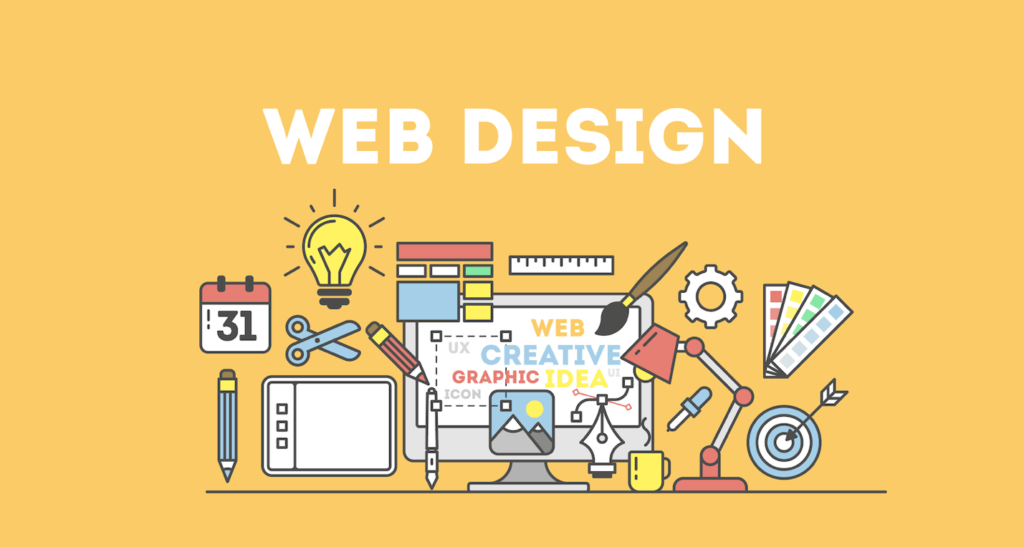Web design is no longer just about aesthetics. Today, it’s about creating seamless experiences that engage users and drive results. Whether you’re a business owner looking to revamp your website or a designer working on your next project, it’s important to stay updated with the latest trends and best practices. In this post, we’ll walk you through some of the most important elements of modern web design that will keep your website fresh and user-friendly.
1. Responsive Design
In 2025, responsiveness is no longer optional—it’s essential. With an increasing number of users browsing the web on mobile devices, tablets, and desktops, websites need to adjust seamlessly to any screen size. Responsive web design ensures that your website looks and functions perfectly across all devices. This not only improves user experience but also helps with SEO, as Google prioritizes mobile-friendly websites.
2. Minimalism and Simplicity
Less is more! The trend of minimalism has taken over the design world, and it’s here to stay. Clean layouts, simple navigation, and fewer distractions make websites easier to use and look more modern. A minimalist approach allows you to focus on what truly matters: content. Prioritize white space and make sure your call-to-action buttons stand out.
3. Dark Mode Options
Dark mode isn’t just for apps anymore; it’s becoming a popular choice for websites too. Many users prefer dark themes for their aesthetic appeal and reduced eye strain. Offering users the ability to switch between dark and light modes gives them greater control over their browsing experience. It’s a great way to enhance user satisfaction and give your site a sleek, modern look.
4. Interactive Elements
Interactivity is a key trend in web design for 2025. Incorporating elements like hover effects, animations, and micro-interactions can make your site more engaging. These elements create a dynamic user experience and can guide visitors through your content. But remember—balance is key. Too many interactive features can overwhelm the user, so use them sparingly to enhance, not distract.
5. Fast Load Times
Speed matters. No one wants to wait for a website to load, and slow sites can increase bounce rates. In 2025, the emphasis on speed is stronger than ever. Optimizing images, reducing unnecessary scripts, and utilizing modern web technologies can drastically improve loading times. A fast website leads to a better user experience, better SEO rankings, and higher conversion rates.
6. Accessibility Features
Accessibility is a priority in web design today. Websites need to be designed with inclusivity in mind, ensuring that everyone—regardless of ability—can use them. This includes providing alternative text for images, ensuring good contrast ratios, and making sure that all interactive elements are keyboard-friendly. In 2025, it’s no longer an option but a requirement to design websites that can be accessed by people with disabilities.
7. User-Centered Design
At the heart of every great website is a focus on the user. User-centered design is all about understanding your audience and designing with their needs in mind. From intuitive navigation to well-organized content, everything should revolve around making the user’s experience as smooth and enjoyable as possible. This requires constant testing, feedback, and iteration to improve.
8. Content-First Approach
Content continues to be king, and in 2025, a content-first approach to web design is essential. This means designing your site with the content in mind, ensuring that it’s readable, accessible, and easy to navigate. A strong content strategy will help guide your design decisions, and content placement should always prioritize user needs.
9. SEO Integration
Designing with SEO in mind ensures your site ranks well on search engines, helping you reach a wider audience. A well-structured website, optimized images, and fast load times all contribute to better SEO. In 2025, SEO is no longer just about keywords; it’s about the overall user experience. Google’s algorithms focus on how well users interact with your site, so prioritize a design that keeps visitors engaged.
10. Strong Branding and Visual Identity
A website is an extension of your brand. In 2025, strong branding should be reflected throughout the design. Use consistent colors, typography, and imagery that align with your brand identity. This not only helps your site stand out but also builds trust and recognition with your audience.
Conclusion
Modern web design in 2025 is about creating user-friendly, fast, and responsive websites that cater to your audience’s needs. By embracing these trends and focusing on clean, accessible designs, you can build a website that not only looks great but performs well. Remember, it’s not just about making things look pretty—it’s about making your website work for your users.
Have any questions about web design or looking to revamp your site? Feel free to get in touch!

